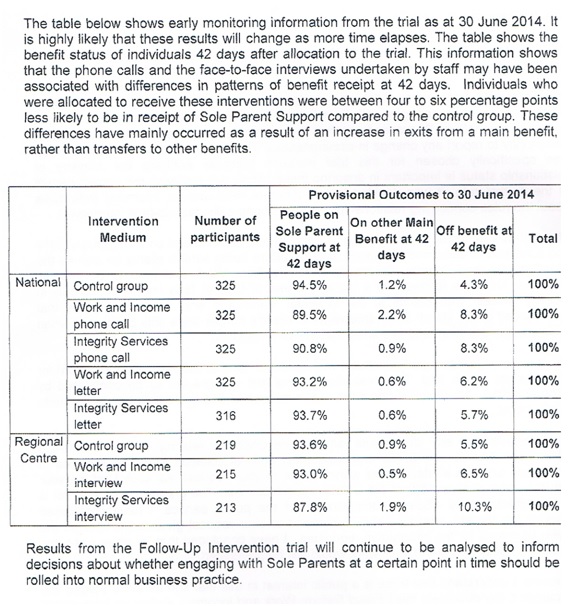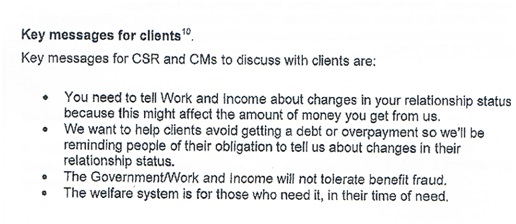We all know plenty of people pulling a sole parent benefit have partners. Anecdotal evidence aside, there are two data sources pointing to this.
One is the Growing up in NZ study (which I wrote about here but it gets quite complicated.) On the face of it, the level of sole parent benefit dependence does not marry up with the number of sole parent households when analysing the data from this longitudinal study following around 7,000 children from Auckland and the Waikato born in 2009/10.
The second is more straight forward. Simon Chapple and Jonathon Boston reveal it in a passage from Child Poverty in New Zealand:
“Work undertaken at the Department of Labour and based on matching Household Labour Force Survey (HLFS) and administrative welfare records indicated, firstly, that in 2011 about 10 per cent of people whose welfare records showed that they were receiving an unemployment benefit reported to the HLFS that they were actually in full-time employment (i.e., working at least thirty hours a week), and hence were ineligible for the benefit; secondly, that more than one-third of people on an unemployment benefit self-reported as not actively seeking work – and one in five expressed no intention to seek work in the coming year; and, thirdly, that about 10 per cent of people whose welfare records showed that they were receiving a DPB reported being partnered or living as married.”
(After a Ministry of Business, Innovation and Employment refusal to release the paper to me, the matter currently sits with the Ombudsman).
It would seem the Ministry for Social Development is aware of the research.
Back in October I blogged about a trial mentioned in their 2014 Annual Report.
“In February 2014, we started a 12-month trial programme of follow-up interventions with a trial to confirm benefit entitlement of 1,616 Sole Parent
Support clients. This involved letters, phone calls and home visits. The trial will be evaluated to inform a nationwide rollout.”
Following an OIA request to MSD, early in December the Ministry released some data to me conceding a “public interest in this trial”.
The trial applied to sole parent support beneficiaries because this is the only benefit that has relationship status a requirement for eligibility. The participants were those who had been on Sole Parent Support benefit (SPS) for 20 weeks. A national group was selected, and a regional group covering Taranaki, Waikato and Wellington. Naturally a control group (which received no follow-up intervention) was also selected and I am assuming these individuals had also been on SPS for 20 weeks.
Here are the early results. The part of the letter describing the outcomes is included. In a nutshell, those beneficiaries left alone were the most likely to remain on a benefit. When Integrity Services (benefit fraud control) conducted the follow-up interview in the regions, 10.3% were off the benefit 42 days after allocation to the trial; another 1.9% was moved to another benefit (which might indicate a relationship was established and different benefit entitlement applied.)

The 10.3% is remarkably similar to the findings after matching HLFS data and WINZ records referred to above.
There is every chance the real incidence is higher. I say that because the trial only covered people who had been on SPS for 20 weeks. I suspect the likelihood of having an undeclared partner grows with time rather than decreases but I may be wrong.
Of course, it’d be easy enough to find out by running follow-up interventions regularly across various cohorts. Though note that under the table the Ministry writes, “Results from the Follow-up Intervention trial continue to be analysed to inform decisions about whether engaging Sole Parents at a certain point in time should be rolled into normal business practice.”
Looks like a no-brainer to me.
Two other fraud initiatives referred to in a further document release include ensuring clients understand the definition of a de facto relationship using a brochure and on-line tool; and, in some cases, asking applicants for a third party that can confirm their relationship status (apparently the current Australian approach.)
Finally the document finishes with this:

Quite. It is not for lifestylers who produce meal ticket children because they can’t be bothered supporting themselves.

